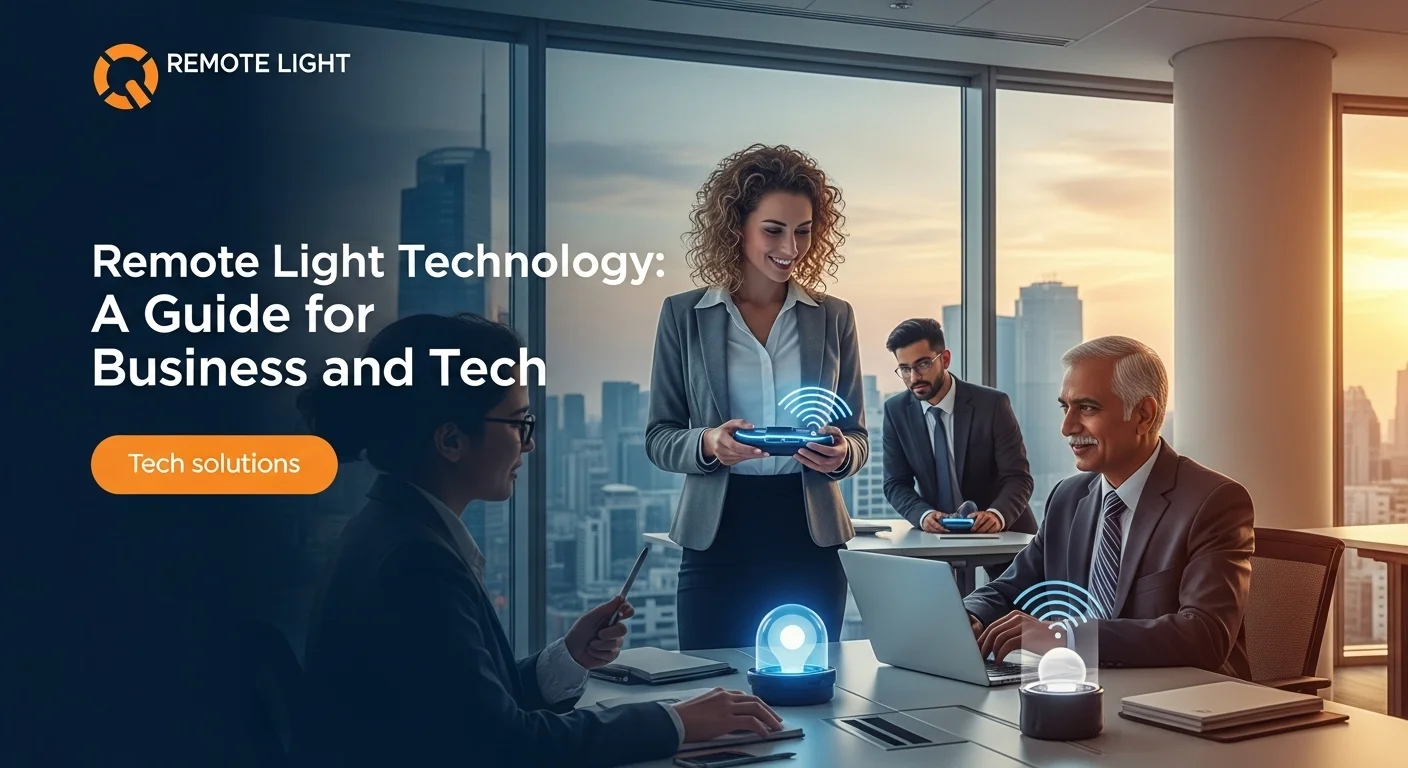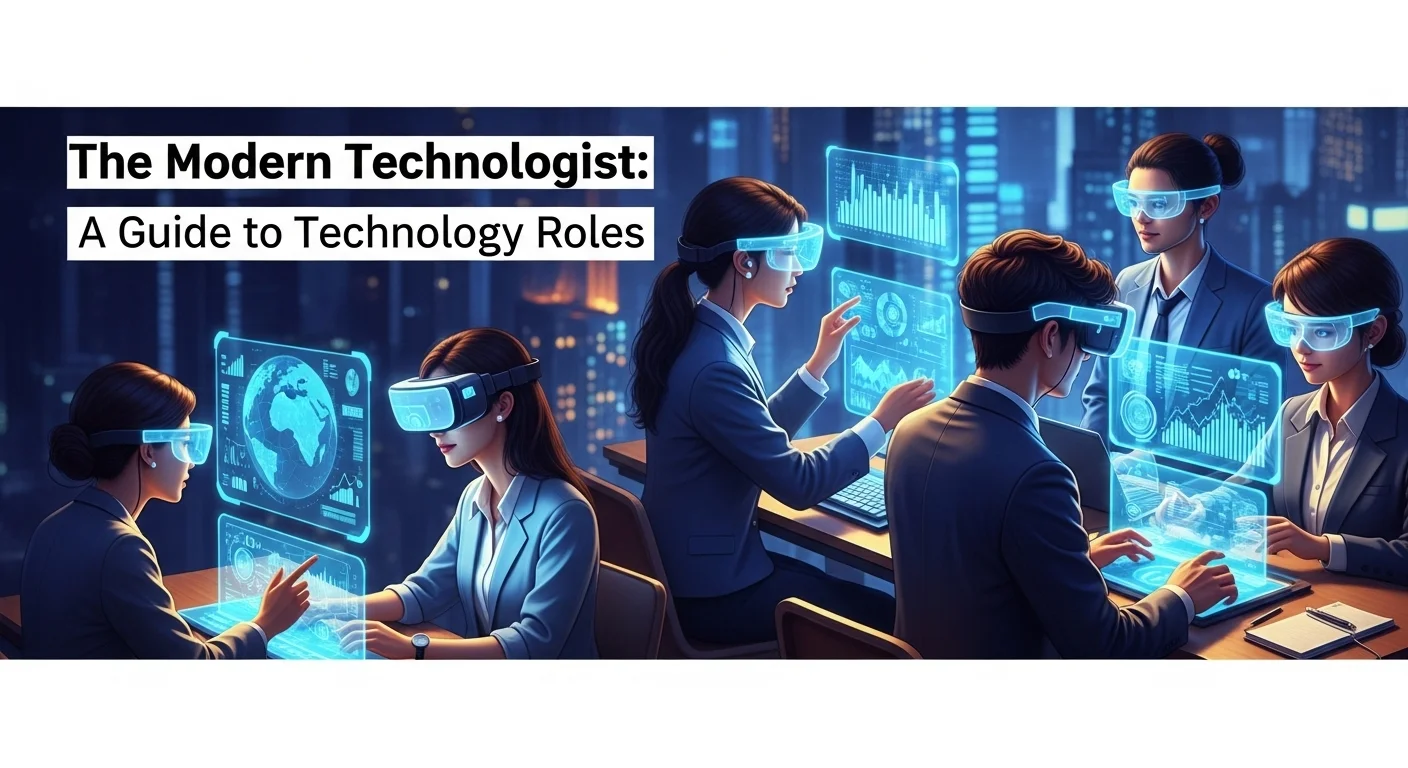Remote Light Technology: Your Practical Guide for Home & Business

Executive Summary
Picture this: you've just settled into bed, only to realize the kitchen light is still on. Years ago, that meant a frustrating trip downstairs. Today, it's a simple tap on your phone or a quick voice command. That's the simple magic of remote light technology, but its true power goes far beyond convenience. I've spent years helping businesses and homeowners integrate these systems, and I've seen them transform everything from energy bills to employee morale. This isn't just about fancy gadgets; it's about creating smarter, more responsive, and efficient spaces. In this guide, I'll walk you through everything you need to know, from the wireless tech that makes it all work (like Zigbee and Wi-Fi) to the leading brands like Lutron and how they fit into ecosystems like Google Nest. We'll explore real-world business benefits like major energy savings and improved security, and I'll give you practical tips for setting up a brilliant system in your own home. Consider this your go-to resource for mastering smart lighting.
Table of Contents
Table of Contents
What is Remote Light and Why is It a Big Deal?
At its heart, remote light technology is simply about controlling your lights without touching a switch. But that's like saying a smartphone is just for making calls. It's the beginning of a much bigger story. This technology transforms lighting from a passive utility into an intelligent, responsive part of our digital lives. It's a cornerstone of the Internet of Things (IoT), where everyday objects gain the ability to communicate. A typical remote lighting setup involves a smart light source (an LED bulb or smart switch), a way to communicate wirelessly, and an interface like your phone or a voice assistant. When you tell your smart speaker to dim the lights, a signal zips through the air to the light, which instantly obeys. This simple action is powered by some seriously cool tech and has huge implications for our convenience, energy use, security, and even our well-being. Its importance is growing every day as it merges with AI, cloud computing, and full home automation to create environments that truly adapt to us.
The Tech Behind the Magic: How It All Connects
The secret sauce of remote light technology is its wireless communication protocols—the invisible languages that let devices chat with each other. I've seen people get overwhelmed by the options, but it's simpler than it sounds. Think of it like choosing the right kind of road for your traffic. Wi-Fi is the public highway everyone already uses. It's everywhere, and many smart lights connect directly to it, making setup a breeze. The downside? Too many devices can create a traffic jam, slowing down your Netflix binge or work calls. Bluetooth is great for short-range trips, like controlling a single lamp from your phone. With Bluetooth Mesh, it can now handle larger networks by letting signals hop from one device to the next, extending its range. For more serious, whole-home systems, you have dedicated protocols like Zigbee and Z-Wave. I often describe these as a private, high-speed toll road just for your smart devices. They operate on their own low-power mesh network, which means they don't clog up your Wi-Fi and are incredibly reliable and fast. They usually need a central hub or bridge—a small box that plugs into your router and acts as the air traffic controller for the whole system. In my experience, for a robust and scalable system, a hub-based approach with Zigbee or Z-Wave is almost always the superior choice.
Why Smart Lighting Matters in the Grand Scheme of Tech
Remote light technology isn't just a standalone gimmick; it's a gateway to bigger things. For many people, smart lighting is their first step into home automation. It's an easy and visually satisfying way to see the benefits of a connected home. Once they've created 'scenes'—like a 'Movie Night' setting that dims the lights and a 'Good Morning' scene that slowly brightens them—they're hooked. From there, they often expand to smart thermostats, locks, and cameras. This is where platforms shine. A system from Lutron, for example, is famous for its refined control over ambiance and its seamless integration with other systems. And when you hear about a Google Nest remote light switch, it's not about a Google-made product. It's about how easily third-party switches can be controlled within the Google Nest ecosystem. This integration unlocks the true magic. For instance, you can set it so your lights flash red if your Nest Protect smoke alarm goes off. In the business world, this is even more critical. It's a key part of modern Building Management Systems (BMS), allowing managers to control lighting across massive office buildings from a single screen, saving a fortune in energy. More and more, these systems are supercharged by AI and the cloud. AI can learn building usage patterns and adjust lighting automatically, while the cloud lets a company manage lighting across all its global locations from one place. Lighting is no longer just a fixture; it's a data-driven asset that makes a business smarter.
Real-World Business Wins and Tangible Benefits
For businesses, switching to smart lighting isn't about looking modern; it's about a clear return on investment. The most obvious win is energy efficiency. I've walked through countless office buildings after hours and seen entire floors lit up for no one. A smart system uses scheduling, dimming, and sensors to slash that waste, often cutting lighting energy consumption by 35% to 70%. For a large company, that's tens of thousands of dollars back in the budget each year, not to mention a much smaller carbon footprint. But the benefits go beyond the electric bill. I've seen firsthand how it impacts employee well-being and productivity. A concept called Human-Centric Lighting uses tunable LEDs to mimic the natural cycle of daylight. This means cool, energizing light in the morning to promote focus, and warmer, calmer light in the afternoon. The result? A more engaged, focused, and happier workforce. Then there's enhanced security. A well-lit exterior is a powerful crime deterrent. A remote light control system allows for smart scheduling and can be linked to motion sensors and cameras. If motion is detected after hours, floodlights can blast the area while an alert is sent to security. It can even create the illusion of occupancy in an empty building. In warehouses and factories, it's a massive safety boost, ensuring work areas are always perfectly lit and even brightening pathways as forklifts approach to prevent accidents. From retail to healthcare, the applications are transforming how businesses operate.

A Deeper Dive: Your Complete Guide to Smart Lighting Solutions
Getting into the weeds of remote light technology reveals a fascinating world of technical choices, strategic business plays, and innovative companies. Whether you're a business leader aiming for sustainability goals or a homeowner looking to add a little 'wow' factor, understanding the details is key to a successful project. This guide will give you the technical know-how, compare the industry giants, and lay out a strategic plan for businesses, including a crucial look at cybersecurity. Making the leap from a basic switch to a fully automated, AI-powered lighting ecosystem is a journey, but the payoff in control, efficiency, and sheer intelligence is immense.
Technical Methods and System Architectures
The first question I always ask clients is: do you want to make the bulb smart, or the switch smart? The answer changes everything. There are three main ways to get started. Smart bulbs are the easiest entry point. You just swap your old bulb for a new one with the wireless tech built right in. It’s perfect for a single lamp or dipping your toes in the water. Smart switches replace your existing wall switches. This is a cleaner, more integrated approach because one switch controls the entire circuit, and anyone can still use the physical switch like normal. Installation is a bit more involved, and you might need an electrician, especially if your home doesn't have a neutral wire (though some brands, like certain Lutron models, have clever workarounds). Lastly, Smart plugs are the versatile option. You plug one into an outlet, then plug your lamp into it. It’s a great, non-permanent solution for lamps. Architecturally, you'll choose between a hub-less or hub-based system. Hub-less (Wi-Fi) systems are simple: each device connects right to your router. It's great for a few devices, but I've seen home Wi-Fi networks grind to a halt when dozens of devices are competing for bandwidth. Hub-based systems (using Zigbee/Z-Wave) are my preference for any serious setup. The hub acts as a dedicated traffic cop, creating a separate, reliable network for your smart devices. This keeps your Wi-Fi free and makes the system faster and more scalable. One app, one hub, dozens of devices—it’s the robust way to build a comprehensive wireless lighting system.
Comparing the Titans: Lutron, Philips Hue, and Google Nest Integration
While there are many players, a few names dominate the smart lighting world. Lutron is the seasoned professional in the room. They've been in lighting control for decades, and their systems are legendary for their rock-solid reliability. Their Caséta line is a homeowner favorite because it just works, thanks to their proprietary Clear Connect technology that avoids interference. If you want a system that will never let you down, Lutron is where you look. Philips Hue, on the other hand, is the artist. They are the undisputed leader in smart bulbs and are famous for their incredible color accuracy and vibrancy. I often tell people, if you want to 'paint with light' and create amazing ambiance for movies or parties, you start with Hue. Their system is built around a Zigbee hub, making it responsive and powerful, and they have an incredible ecosystem of apps that let you sync your lights to music, games, and more. Then there's the Google Nest ecosystem. The idea of a Nest remote light switch isn't about a physical product but about Google's role as a master controller. The Google Home app and Nest Hub devices can command a huge range of 'Works with Google Assistant' products from dozens of brands, including Lutron and Hue. The real value here is unified voice control. You can group lights from three different manufacturers into one 'Living Room' group and turn them all off with a single command. It allows you to pick the best-in-class device for each job while still having a simple, centralized way to control everything.
Business Implementation and Cybersecurity Imperatives
For a business, deploying a remote lighting system is a major strategic move that demands careful planning. The process starts with a needs assessment. What's the main goal? Slashing energy costs? Creating an amazing customer experience in a store? Boosting productivity? The answer guides every other decision. Scalability is also vital; you need a system that can grow from one floor to a whole portfolio of buildings. But with all this connectivity comes a risk that many businesses overlook: cybersecurity. I can't stress this enough. Leaving your smart lighting network unsecured is like leaving a back door to your entire corporate building unlocked. It can become an entry point for hackers to get into your main IT network. They could launch attacks, or even just look at occupancy sensor data to learn your company's daily routines. To prevent this, you need a layered defense. This means choosing vendors who provide regular security updates, enforcing strong passwords, and, critically, separating your lighting network from your core corporate network (using something called a VLAN). All communication should be encrypted. You have to treat your lighting system with the same security seriousness as you do your financial data. By doing so, you can safely unlock all the amazing benefits without creating a dangerous vulnerability.

Tips and Strategies to Master Your Smart Lighting Experience
Getting the most out of remote light technology means moving beyond just using your phone as a glorified light switch. The real magic happens when you embrace automation and strategic planning. You want your lighting to work for you, adapting to your life and work patterns without you having to think about it. This section is packed with my favorite tips and advanced strategies to help you master your home system, optimize for business, and see what's coming next. With these approaches, you'll turn your lighting from a simple utility into a powerful tool for comfort, productivity, and efficiency.
Best Practices for Home Users: Beyond the On/Off Switch
To truly elevate your smart home, aim for automation, not just remote control. Don't just collect smart devices; orchestrate them. Here's how: 1. Start with a Plan, Not a Product: Before you buy a single bulb, ask yourself what problem you want to solve. Do you want to wake up more gently? Make movie nights more epic? Improve security? Your goals will tell you if you need color bulbs, simple dimmers, or motion sensors. A little planning saves a lot of headaches later. 2. Master Scenes and Schedules: This is where the fun begins. Create a 'Focus' scene that turns your desk lamp to a cool, bright white. Create a 'Relax' scene that dims the living room to a warm glow. Then, automate them with schedules. I have my lights fade on slowly every morning to mimic a sunrise—it's a much nicer way to wake up. Scheduling all non-essential lights to turn off at bedtime is an easy win for your energy bill. 3. Use Voice Control Like a Pro: Connecting to a voice assistant is a game-changer. The key is smart naming. Call your lamp 'Bedside Lamp' in the app, not 'Light 3'. It makes voice commands feel natural. Use the grouping feature to control a whole room with one phrase. My 'Hey Google, turn on the kitchen' command activates the ceiling lights, under-cabinet strips, and island pendants all at once. 4. Add Motion Sensors for True Automation: For places you pass through often, like hallways, laundry rooms, or closets, motion sensors are a must. The lights pop on when you enter and turn off after you leave. This is the essence of a truly smart home—one that anticipates your needs. 5. Think in Layers: Professional designers use layers of light: ambient (overall light), task (for specific activities), and accent (to highlight art or architecture). You can do this with smart lighting. Use a Lutron wall dimmer for your main ambient lights, a bright smart bulb at your desk for task lighting, and a colored lightstrip behind the TV for accent. Controlling these layers together in scenes gives you incredible flexibility.
Advanced Strategies for Business and Commercial Environments
In a business setting, smart lighting is a powerful tool that can deliver huge returns if you think strategically. 1. Implement Human-Centric Lighting (HCL): This is a game-changer for offices. HCL systems use tunable white light to support our natural body clocks. The light automatically shifts from a cool, blueish tint in the morning to a warm, amber tone in the afternoon. I've seen it boost alertness, improve sleep quality for employees, and increase job satisfaction. It's a direct investment in your team's well-being and productivity. 2. Use Data for Business Intelligence: Your commercial lighting system is secretly a data-gathering powerhouse. The occupancy data it collects is gold. You can see which conference rooms are never used, which collaborative spaces are always packed, and track traffic flow. This data can inform decisions on real estate, desk arrangements, and even cleaning schedules, saving a ton of money. 3. Integrate with Other Building Systems: A smart building's true power is unlocked through system integration. Connect your lighting to the HVAC system. When sensors see a floor is empty, the system can turn off the lights *and* lower the heating or cooling, multiplying your savings. Link it to the fire alarm to turn all lights to full brightness in an emergency. Tie it to building access so lights turn on in an area only when an employee badges in. 4. Choose Enterprise-Grade Platforms: Don't try to run an office on consumer-grade gear. Opt for commercial platforms from manufacturers like Lutron (Vive, Athena) or Signify (Interact). These are built for scale and security, with centralized dashboards for managing thousands of lights and providing detailed energy reports. 5. Make Cybersecurity Day One Priority: I'll say it again: security cannot be an afterthought. Businesses must do a full risk assessment and work with their IT department to isolate the lighting network. Demand a clear cybersecurity policy from any vendor. This isn't just about protecting lights; it's about protecting your entire organization.
The Future of Remote Light: AI, Li-Fi, and Hyper-Personalization
The evolution of smart lighting is accelerating. The future is moving towards systems that are truly intelligent. Artificial Intelligence (AI) will become standard. We're moving beyond simple schedules to predictive systems. An AI will learn that your team gets sluggish around 2 PM on Thursdays and will proactively adjust the lighting to be more energizing. It will learn your personal preferences at home and adapt automatically. Another mind-blowing frontier is Li-Fi (Light Fidelity), which uses light to transmit data. Imagine your LED light fixtures also providing an ultra-fast, ultra-secure internet connection that can't pass through walls. Finally, the ultimate goal is hyper-personalization. Picture walking through your office and having the overhead lighting adjust to your personal preferences, which are stored on your phone. This level of customization will define the smart spaces of the future. By understanding these trends and using the strategies in this guide, you can ensure your investment in remote light technology pays off today and is ready for tomorrow.
Expert Reviews & Testimonials
Sarah Johnson, Business Owner ⭐⭐⭐
Good overview of Remote Light, but as a business owner, I'd have loved to see more concrete case studies or practical examples.
Mike Chen, IT Consultant ⭐⭐⭐⭐
This was a really helpful article on Remote Light. It clarified a lot for me, though a few of the technical explanations could have been a little simpler.
Emma Davis, Tech Expert ⭐⭐⭐⭐⭐
Absolutely fantastic article! It's incredibly comprehensive on Remote Light. This was a huge help for my specialization—I understood everything perfectly.



